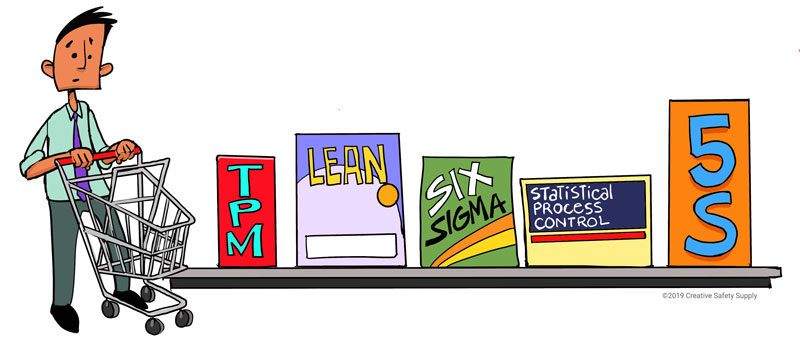
Quality control (QC) in manufacturing is any effort that is made to review the quality of products to identify and eliminate defects. Ideally, the defects will be found and fixed before the products ever reach the hands of consumers, but in some cases, a defect can be found that will trigger a recall or other effort to fix the issue after the product has been delivered.
In most modern manufacturing facilities, quality control is extremely important because of the fact that such a high volume of products are made in a short period of time. If a machine is causing a defect, it can result in thousands of products being produced that aren't up to the necessary standards.
Advantages of Effective QC
When a manufacturing facility has a good QC system in place, they will benefit in many ways. These benefits don't stop just at the manufacturing company, but extend to customers, vendors, employees, and more. The following are some of the key advantages to having an effective QC system in place:
- Customer Loyalty - Quality control helps to reduce the risk of a defective product making it into the hands of customers. Providing customers a consistently positive experience will improve their loyalty to the brand.
- Reduced Waste - Being able to identify quality issues quickly will reduce the amount of waste produced due to defective products.
- Compliance - In many manufacturing industries, there are compliance, environmental, and other regulations that must be met. QC programs can focus on these areas to ensure compliance.
- Customer Referrals - Customers who receive consistently high quality products are more likely to refer their friends and family to that brand.
- Improved Safety - A defective product is often a dangerous product. QCl can find and eliminate potential safety issues early on.
- Employee Empowerment - In most quality control systems all employees are encouraged to take steps to identify issues. This can help to empower employees, which can lead to improved morale.
- Increased Profits - Allowing defective products to continue to be made can result in very costly recalls, lost customers, and an overall drop in profitability.
- Corporate Image - Companies are often known for their great reliability. This accomplishment starts with a great quality control department.
These are just the most tangible benefits of an effective QC system in manufacturing. There are also many secondary, advantages that a company will enjoy. Taking the time to implement and improve QC systems will help any business improve over time.
Quality Control Strategies
Starting a quality control system in a manufacturing environment takes planning and effort to ensure it is done right. There are many different methodologies out there that are used by businesses around the world to help with QC. Many of them are designed to help with other areas of operating a facility, but will have a direct and positive impact on the quality control efforts as well.

Six Sigma + Quality Control
Six Sigma is a set of principles that is focused on ensuring a product, and all its features, are designed to meet the needs of the customers without defects. In order for a product or procedure to be considered Six Sigma, it needs to have virtually zero defects. For a manufacturing company to achieve true Six Sigma standards, the entire corporate culture must be focused on quality control at all times.
Statistical Process Control
Statistical Process Control (SPC) tracks production metrics by monitoring quality at every step. It allows managers to better identify problems and get them solved before they leave the facility. This type of system is very effective as both a beginning qc, and a way to push it along to more advanced levels.
Lean for Quality Control
Lean manufacturing is a technique that helps companies to plan out how products will be created or improved. The idea is to be able to minimize any waste and maximize the efficiency of the product. The processes involved with lean have systems in place to identify improvement opportunities and implement them successfully. QC can take advantage of these lean manufacturing strategies to quickly find and eliminate defects.
Total Productive Maintenance
Total Productive Maintenance (TPM) is a system where the integrity of production is maintained and improved by using machines, equipment, processes, and other resources that can help to add value. By using a proactive approach, problems are identified early on in the process so that they can be evaluated and eliminated as quickly as possible. This is very well established way of improving manufacturing production systems, and functions very well as part of an overall QC strategy in most environments.
5S
5S strategies are best known as being used for waste reduction and elimination, but this can also serve as a great quality control strategy. Defective products can be a major source of waste, so using the 5S methodologies is a great option for identifying issues that can cause problems and eliminating them.
Employee Responsibility

Most manufacturing facilities will have one department that is dedicated to QC. These individuals will perform a variety of important tasks such as inspecting random products, watching for reports of defects, and much more. The best way to truly improve the quality of the products in a facility is to engage all employees to be part of the overall QC system. If an employee notices something out of the ordinary, they should be empowered with the ability to take whatever steps are necessary to analyze the situation and get it corrected.
This may include stopping production so that the issue can be properly analyzed. While this can increase the downtime for production in the short term, the improved quality of the products that are made in the facility will go up significantly over time. Having an entire facility that is dedicated to quality control will keep far more eyes on the production process so that it is more likely that defects will be discovered early on in the production process so they can be resolved.


